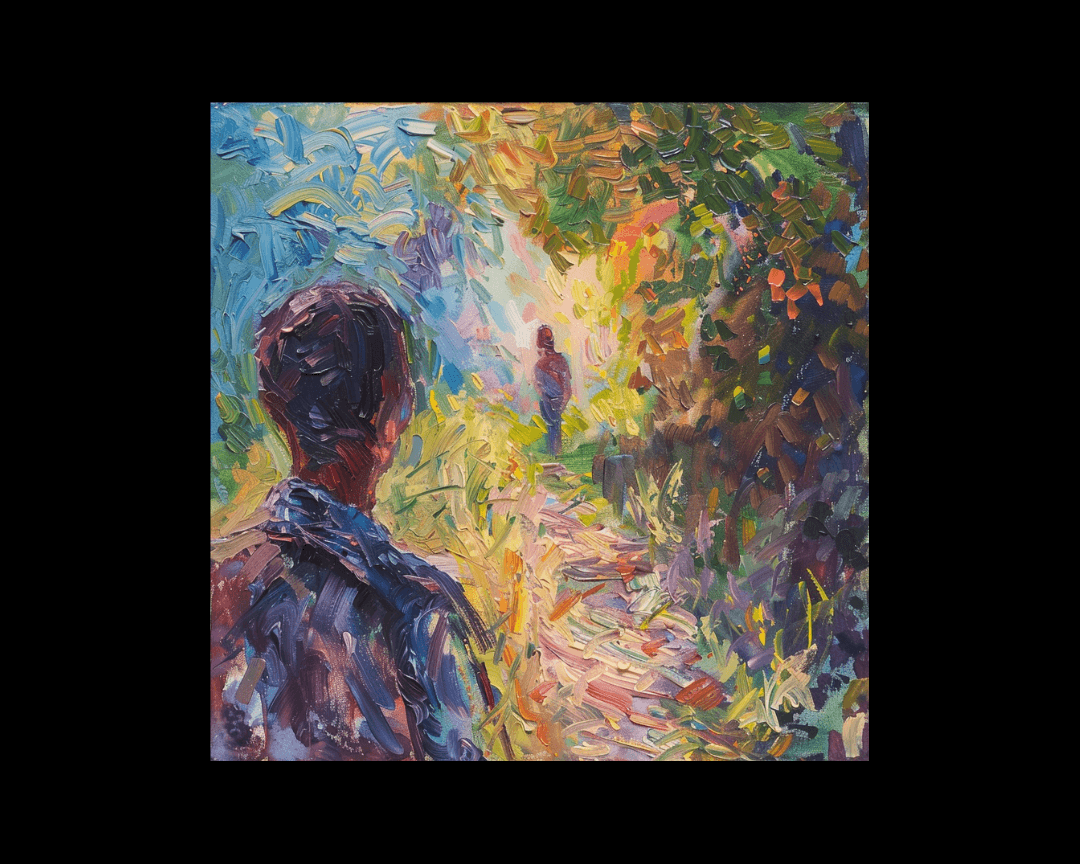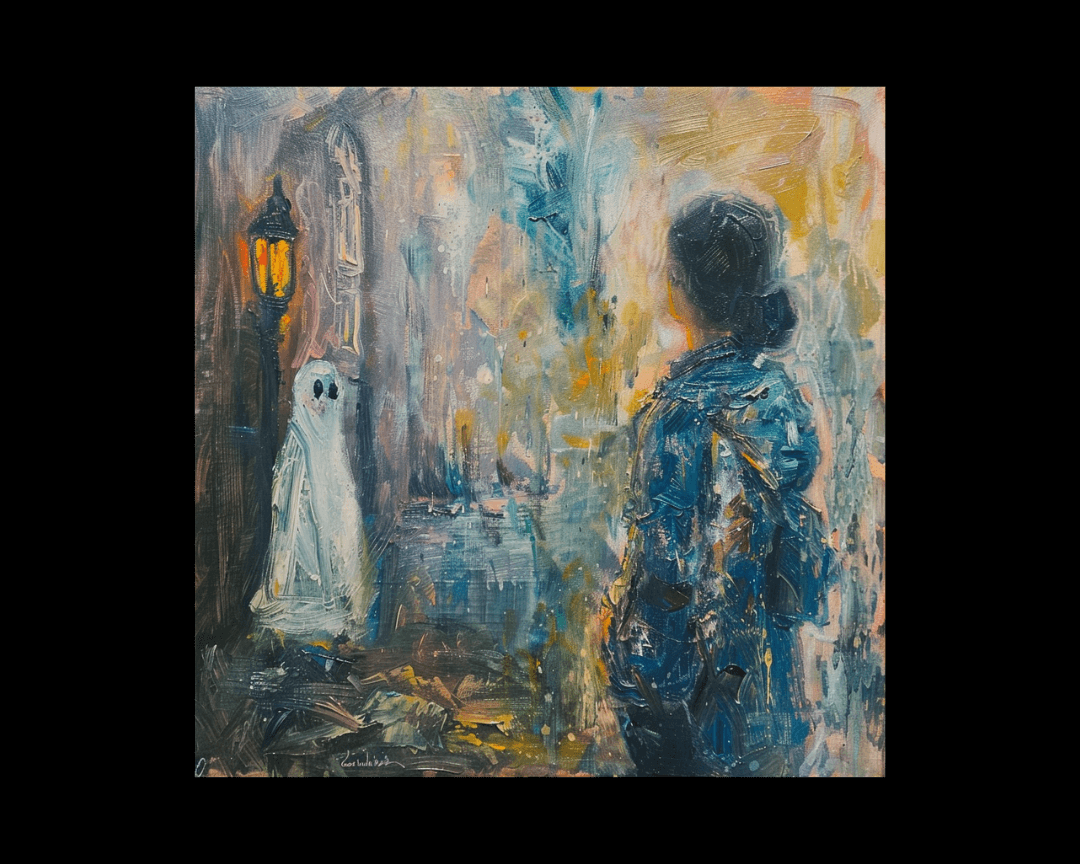The Ghost: Crafting Character Through Emotional Wounds
In the tapestry of a character's life, the threads of the past often weave the most intricate patterns. These threads, these echoes of old pains and...
4 min read
 Writing Team
:
May 24, 2024 2:44:59 PM
Writing Team
:
May 24, 2024 2:44:59 PM

In the tapestry of a character's life, the threads of the past often weave the richest patterns. These threads, these echoes of a life lived before the first page is turned, are what we call backstory—the history that shapes and defines a character, that lends depth and dimension to their being.
Just as our pasts inform our present, so do a character's experiences shape their voice, thoughts, actions, and essence. Read on as we talk about what goes into a character’s backstory and how it is a powerful way for writers to guide their characters forward.
Why, then, is backstory so vital to the crafting of compelling characters? It is not merely a matter of filling in the blanks, of providing a chronology of events that led to the present moment. No, the true power of backstory lies in its ability to illuminate the inner workings of a character's mind, to shed light on the fears and desires, the wounds and triumphs that drive them forward.
Consider a character who flinches at the sound of raised voices and whose eyes dart nervously in the presence of authority figures. Without the context of backstory, this behavior may seem odd, even inexplicable.
But if we learn that this character grew up in a household marked by violence, that they lived in constant fear of a tyrannical parent, suddenly their actions take on a new meaning. The flinch becomes a scar, a reminder of a trauma endured. The darting eyes become a survival mechanism, a habit born of necessity.
In this way, backstory becomes the key that unlocks the mysteries of character. It allows us to see beneath the surface, to understand the complex web of experiences and influences that have shaped a person's psyche. In doing so, it breathes life into the characters we craft, transforming them from mere constructs of ink and paper into living, breathing entities with histories and heartaches.
But crafting a compelling backstory is no easy feat. It requires a deep dive into the character's past and a willingness to explore the formative moments and relationships that have left their mark.
It demands that we ask the hard questions, probe the depths of the character's soul, and uncover the truths buried there.
What, then, are these questions that we must ask? They are as varied and complex as the human experience itself, but there are certain key areas that every writer should explore.
We must ask about the character's upbringing, the circumstances of their birth, and the influences of their early life. Were they raised in poverty or privilege, in a loving home or a broken one? Did they have siblings, friends, or mentors who shaped their worldview? Were they encouraged to follow their dreams, or did the expectations of others stifle them?
We must ask about the character's relationships, about the people who have left an indelible mark on their hearts and minds. Who was their first love, their greatest rival, their deepest confidante? How did these relationships shape their understanding of the world and their beliefs about themselves and others?
We must ask about the character's triumphs and tragedies and the moments of joy and sorrow that have punctuated their lives. What were their greatest achievements, their proudest moments? And what were their darkest hours when they felt lost, broken, utterly alone?
But asking these questions is only half the battle. The true challenge lies in how we reveal the answers and weave the backstory threads into the narrative's tapestry. For just as an info dump can grind a story to a halt, so too can a clumsily executed backstory shatter the illusion of a fully realized character.
The key, then, is to reveal the backstory with a light touch, dropping hints and clues that invite the reader to piece together the puzzle of the character's past. This can be done through dialogue, internal monologue, and the subtle details of their actions and interactions.
A fleeting memory triggered by a smell or a sound, a cryptic reference to a past event, a scar glimpsed in a moment of vulnerability—these are the breadcrumbs that lead us deeper into a character's psyche, hinting at the depths of their experience without overwhelming the narrative.
Consider a character who always orders the same drink at a bar - a whiskey, neat. Without any context, this detail may seem insignificant, a mere quirk of preference. But if we later learn that this was the drink their father always ordered, the one he would nurse for hours before unleashing his rage upon the family, suddenly that simple choice takes on a new weight. It becomes a symbol of a trauma endured, a silent tribute to a past that cannot be escaped.
In this way, the most powerful revelations of backstory are often the most subtle, the most understated. They are the details that slip by almost unnoticed but linger in the reader's mind, inviting curiosity, empathy, and a deeper connection to the character.
Of course, there is always the danger of going too far, of overwhelming the narrative with the weight of the past. A character's backstory should inform their present, not overshadow it. It should be a subtle undercurrent, not a raging torrent that sweeps the story off course.
This is where the art of selection comes into play—the ability to choose the most essential elements of a character's past and weave them into the story with precision and restraint. Every detail revealed should serve a purpose, adding depth and shading to the character's portrait without obscuring the picture as a whole.
Ultimately, the power of backstory lies in its ability to create a bridge of empathy between the character and the reader. When we understand a character's past and see the scars they bear and the battles they've fought, we cannot help but feel a kinship with them, a sense of shared humanity that transcends the bounds of fiction.
This is the alchemy of great characterization, the magic that transforms words on a page into living, breathing entities that live on in the reader's mind long after the story has ended. And it all begins with the careful crafting of backstory, with the patient excavation of a character's past.
So, let us, as writers, embrace the challenge of backstory. Let us dive deep into our characters' histories, into the formative moments and defining relationships that have shaped their souls. Let us ask the hard questions and unearth the buried truths, scars, and triumphs that make them who they are.
Let us weave these threads into our stories with care and subtlety, with a light touch that invites the reader to discover the depths of our characters for themselves. In doing so, we create compelling narratives and mirrors of the human experience itself, reflections of the joys and sorrows, the hopes and fears that bind us all.
This is the true power of backstory, the magic that elevates our craft from mere entertainment to something far more profound - a window into the human soul, a testament to the enduring power of empathy and understanding.

In the tapestry of a character's life, the threads of the past often weave the most intricate patterns. These threads, these echoes of old pains and...
.png)
Characters are individuals who want something, and these desires can be categorized into two distinct types: the character's intrinsic wish...

In the realm of fiction, character reigns supreme. Readers experience the triumphs and tragedies, the loves and losses, the grand adventures and...